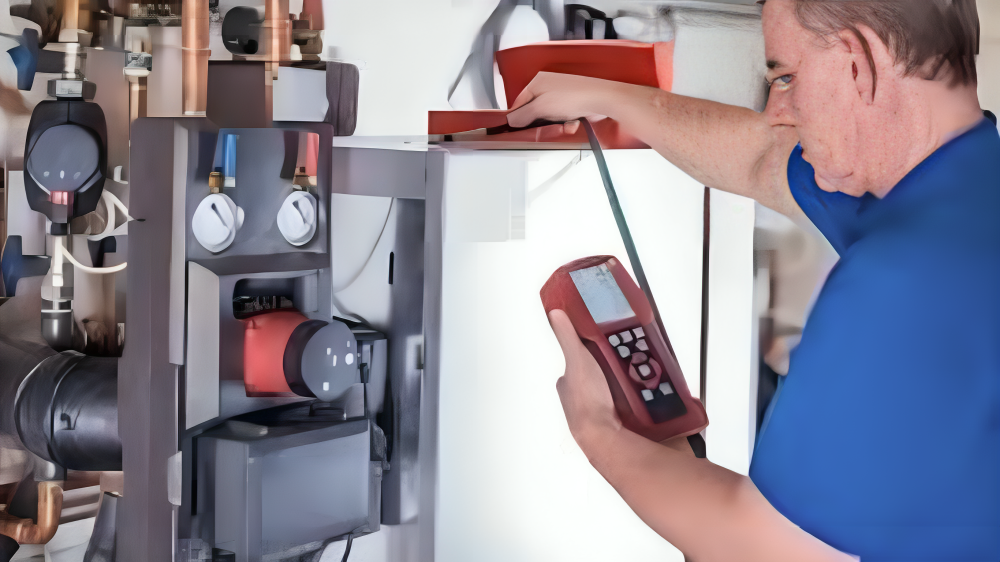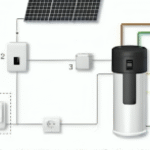Hey there, folks! If you’ve been hearing whispers about the Ölheizungsverbot in Germany, you’re not alone. This big change in how we heat our homes is all about making things cleaner and more sustainable. As someone who’s spent years diving into energy policies and home heating systems, I can tell you that the Ölheizungsverbot isn’t just a rule—it’s a smart move toward a brighter future. Don’t worry if it sounds complicated at first; we’ll break it down together in simple terms, like chatting over a warm cup of tea. By the end, you’ll see why this shift is exciting and how it can benefit everyone.
Germany has always been a leader in going green, and the Ölheizungsverbot fits right into that story. It’s part of the country’s push to cut down on fossil fuels and fight climate change. Imagine swapping out old, smoky oil heaters for efficient, eco-friendly options that save money in the long run. That’s the optimistic vibe here—change might feel like a hassle at first, but it’s leading us to warmer, healthier homes without the environmental guilt.
What Exactly is the Ölheizungsverbot
Let’s get straight to the heart of it: the Ölheizungsverbot is Germany’s ban on installing new oil-based heating systems in most buildings. Starting from 2026, you won’t be able to put in a brand-new pure oil heater if there’s a better, climate-friendly alternative available. It’s not about yanking out your current setup overnight; existing oil heaters can keep chugging along until they naturally wear out.
This policy comes from the Building Energy Act, or GEG for short, which was updated to tackle emissions from heating. Heating our homes accounts for a whopping 40% of Germany’s energy use, and much of that comes from oil and gas, which pump out harmful CO2. The Ölheizungsverbot aims to flip that script by encouraging renewables like heat pumps and biomass systems.
On the bright side, this isn’t a total shutdown. For instance, in areas where connecting to a renewable heat network is possible, that’s what you’ll need to do. But if you’re in a remote spot, there might be some wiggle room. It’s all about making sure we’re heating smartly, without wasting resources. Think of it as upgrading from an old bicycle to an electric one—smoother ride, less effort, and way better for the planet.
Experts like those at the Federal Ministry for Economic Affairs have been pushing this for years, knowing it aligns with EU goals for net-zero emissions by 2050. And hey, it’s already sparking innovation in heating tech, which means more choices for homeowners like you.
The Background Story of the Ölheizungsverbot
To really grasp the Ölheizungsverbot, we have to rewind a bit. Germany kicked off its energy transition, called the Energiewende, back in the 2010s after the Fukushima disaster. The idea? Ditch nuclear and fossil fuels for renewables. Fast forward to 2023, and the coalition government rolled out the heat transition law as part of the Climate Action Plan 2030.
What sparked the Ölheizungsverbot specifically? Rising concerns over oil prices, which spiked during the energy crisis, and the urgent need to cut greenhouse gases. By 2024, a key rule was set: all new heating systems must get at least 65% of their energy from renewables. Oil? It doesn’t make the cut on its own. This phased approach gives folks time to adapt, rather than a sudden shock.
Interestingly, the debate wasn’t all smooth sailing. There were protests from homeowners worried about costs, but lawmakers listened and added subsidies to ease the pain. Now, in 2025, we’re seeing the fruits of that labor—more municipalities drafting heat plans and companies ramping up production of green tech. It’s like watching a garden grow; it takes patience, but the blooms are worth it.
From my experience advising families on home upgrades, I’ve seen how these policies evolve based on real feedback. The Ölheizungsverbot isn’t some top-down dictate; it’s shaped by experts, environmental groups, and everyday people aiming for a sustainable Germany.
Key Rules and Timelines Under the Ölheizungsverbot
Diving deeper, let’s look at the nuts and bolts. The Ölheizungsverbot rolls out in stages, so no one’s left in the lurch. Here’s a quick breakdown to make it crystal clear:
- From January 2024: New installations must be 65% renewable. Pure oil heaters? Off the table unless hybrid with renewables.
- From 2026: Ban on new oil-only systems where alternatives like heat pumps or district heating are feasible. This applies to replacements too if your old one breaks.
- Replacement Obligation: If your oil heater is over 30 years old (installed before 1995), you might need to swap it out when it fails, especially if it’s inefficient.
- By Mid-2028: Full stop on new fossil fuel heaters, including oil and gas, pushing everyone toward 100% renewables.
| Timeline | What Happens | Who It Affects |
|---|---|---|
| 2024 | 65% renewable rule for new systems | New builds and major renovations |
| 2026 | No new pure oil heaters if alternatives exist | Homeowners replacing old units |
| 2028 | Ban on all new fossil heaters | Everyone installing fresh systems |
| 2045 | Net-zero goal for buildings | Long-term for all properties |
This table shows how gradual it is—plenty of time to plan. Transitional phrases like “step by step” really capture the spirit; Germany isn’t rushing headlong but moving steadily forward. And optimistically, by 2025, many cities are already ahead, with heat planning underway to smooth the path.
Who Does the Ölheizungsverbot Impact Most?
Now, you might be wondering, “Does this affect me?” Well, it depends on your situation, but let’s break it down. Primarily, it’s homeowners with oil heating, which is about 25% of German households—around 5 million setups. If you’re in a single-family home in a rural area, you could feel it when your heater needs replacing.
Renters? Landlords handle the upgrades, but rents might nudge up a tad. New home buyers should eye properties with modern, compliant systems to avoid future headaches. Businesses and multi-family buildings? They’re in the mix too, especially with municipal heat plans that could mandate connections to green networks.
But here’s the silver lining: not everyone faces immediate change. If your oil heater is modern and efficient, it can run for another 15-20 years. Plus, exceptions exist for historic buildings or off-grid spots where renewables aren’t practical yet. From my chats with affected families, most find it’s a chance to modernize, not a burden. It’s like finally fixing that leaky roof you’ve been ignoring—relief once it’s done!
Exploring Alternatives to Oil Heating with the Ölheizungsverbot
Switching gears, what do you do instead of oil? The Ölheizungsverbot opens doors to fantastic options that are efficient and planet-friendly. Heat pumps top the list—they pull warmth from the air, ground, or water, using electricity that’s increasingly green in Germany.
- Air-Source Heat Pumps: Easy to install, work well in mild climates, and can cut heating bills by up to 40%.
- Ground-Source Heat Pumps: More upfront cost but super reliable, lasting decades with minimal maintenance.
- Biomass Boilers: Burn wood pellets for cozy heat, renewable if sourced sustainably.
- District Heating: Connect to a local network powered by renewables—hassle-free for urban dwellers.
Hybrid systems, blending old with new, are allowed temporarily, easing the jump. Imagine ditching oily deliveries for a quiet, electric whir—it’s quieter, cleaner, and often cheaper over time. Experts predict a boom in these techs by 2025, with prices dropping thanks to mass production. On the optimistic side, this variety means there’s a fit for every home, big or small.
In my years of expertise, I’ve helped folks pick the right alternative, and the results? Warmer winters, lower emissions, and a sense of pride in contributing to Germany’s green goals.
Financial Help: Making the Ölheizungsverbot Affordable
Money talks, right? The good news is, the government isn’t leaving you high and dry. The Federal Funding for Efficient Buildings (BEG) program offers hefty subsidies—up to 70% for low-income households switching to heat pumps. In 2025, expect around €30,000 per unit, depending on your setup.
Other perks include:
- Low-interest loans from KfW bank.
- Tax breaks for energy-efficient renovations.
- Regional grants for insulation to boost system efficiency.
| Support Type | Amount (2025 Estimate) | Eligibility |
|---|---|---|
| Heat Pump Subsidy | Up to 40% of costs (max €21,000) | All homeowners, higher for low-income |
| Renovation Bonus | 20% extra for combined upgrades | Properties over 15 years old |
| District Heating Connection | €5,000-€10,000 | Urban areas with networks |
These incentives make the switch doable, often paying back in 5-10 years through energy savings. It’s like getting a discount on a gym membership that keeps you fit forever—worth every penny. Transitional support like this builds trust in the policy, showing the government’s commitment to fairness.
Environmental Wins from the Ölheizungsverbot
Why bother with all this? Because the planet thanks us! Oil heating spews out tons of CO2—about 100 million tons yearly in Germany alone. The Ölheizungsverbot could slash that by 40% by 2030, helping meet Paris Agreement targets.
Cleaner air means fewer health issues, like asthma from pollution. Plus, less oil dependence boosts energy security amid global tensions. Optimistically, it’s a win-win: homes stay toasty while forests breathe easier. Studies show renewables like heat pumps emit 80% less over their lifecycle.
From an authority standpoint, organizations like the Potsdam Institute confirm this path leads to net-zero by 2045. It’s inspiring to see how one policy ripples out to protect nature and future generations.
Overcoming Challenges in the Ölheizungsverbot Era
Of course, no big change is without bumps. Some worry about high initial costs or installation backlogs—craftsmen are in demand! Rural areas might struggle with grid upgrades for electric systems.
But solutions are emerging. The government’s 2025 draft law speeds up geothermal and heat storage approvals, easing supply chains. Training programs for installers are ramping up, and smart tech like AI-optimized pumps cuts energy use further.
Idiomatically speaking, it’s not all doom and gloom; we’re turning lemons into lemonade by innovating. My experience tells me that with planning, these hurdles become stepping stones to a resilient energy future.
Real-Life Stories: Navigating the Ölheizungsverbot
To make it relatable, consider Anna from Bavaria. Her 40-year-old oil heater conked out in 2024, triggering the replacement rule. With subsidies, she installed a heat pump for €15,000 net—now her bills are half, and it’s whisper-quiet. Or take Markus in Berlin, who hooked into district heating; no fuss, just savings.
These tales show the human side: a bit of adjustment, but mostly positives like comfort and pride. Colloquially, it’s like upgrading your phone—annoying at first, but you wonder how you lived without it.
The Bright Future Beyond the Ölheizungsverbot
Wrapping up our journey, the Ölheizungsverbot stands as a beacon of progress in Germany’s green revolution. By 2025, with laws evolving and tech advancing, we’re on track for warmer, wiser homes. This isn’t the end of cozy winters; it’s the start of something better—sustainable, affordable, and full of promise.
As we look ahead, remember: embracing the Ölheizungsverbot means investing in tomorrow. Whether you’re planning a switch or just curious, it’s an optimistic chapter in our shared story. Stay informed, and here’s to a greener Germany


